Best AR-10 Scopes [2025] Ultimate Buyers Guide
While the AR-15 dominates the rifle marketplace, it wasn’t the first in the Stoner family of rifles. The AR-15 is the younger, smaller, and cuter brother of the mighty AR-10. Eugene Stoner created the AR-10 in 1955. At this period, the 308 and 7.62 NATO rounds ruled the military market, and the AR-10 promised a modern, lightweight rifle made from aluminum and plastic components. While the AR-10 never reached the same popularity of the AR-15, it’s still quite popular.
The AR-10 fires a more powerful round than the 5.56 enabled AR-15. With a more powerful round, you’ll expect more range on top of additional penetration and power. The AR-10 absolutely demands an optic to get the most out of all that extra power. What kind of optic? Well, good question. There are lots and lots of optics on the market, and guess what? We narrowed it down to our favorite few, and so, in this article, I’m going to list the best AR 10 Scopes on the market.
Types of AR-10 Scopes
Before we get into our list of the best AR10 scopes, we need to first discuss the different uses and thus, the different types.
Now, I know what you’re going to say – there are thousands of optics on the market. Luckily though, they can be broken down into several different categories, especially for the purpose of the AR10. Understanding these categories and the terms used to describe them will certainly make this article a bit easier to understand. Let’s break down the most common type of optics you’ll see on the AR-10.
Variable – Variable optics provide shooters with a magnified optic that provides a variety of magnification levels. These optics vary broadly between power levels and can be as simple as a 2-7X scope to a 7-35X. With an AR-10, you could make an argument for a variety of magnification levels depending on the rifle’s design and caliber. These offer the most magnification for taking those long-range shots.
LPVO – LPVO stands for low-powered variable optic. These are a different class of variable optics that have become popular enough to warrant their own category. These optics use a magnification rating that starts low, at 1X most commonly, but 1.5x isn’t highly irregular. On the high side, these optics go to 10X, but 1-4X, 1-6X, and 1-8X are all very common in this market. LPVOs grant users an awesome degree of versatility. They excel in both close and moderate ranges and can be quite handy on an AR-10.
Reflex Sights – Reflex sights are 1X optics designed to make shooting at 0 to 200 yards easy and intuitive. Reflex sights can be red dots or holographic sights. These are non-magnified optics but can be paired with an external magnifier for longer-range shots. Reflex sights are often quite affordable and very simple. They don’t give you good performance in the long-range department but offer close, rapid-fire capabilities that make use of the AR-10s semi-auto action. To learn more about reflex sights, check this out.
Prism – Prism, or prismatic scopes, offer you a low, fixed powered optic that takes up very little room and is often lightweight. These simplistic optics don’t offer the versatility of an LPVO, but they give you a magnified optic that’s insanely durable with a small footprint. It’s easy to use, and with the right techniques, it can be used at close ranges efficiently and out to moderate ranges as well. To learn more about prism scopes, check this out.
List of the Best AR10 Scope on the Market
Okay, so now that we better understand the different types of scopes commonly used for an AR10, let’s go ahead and dive into our list of top AR10 scopes – just keep in mind LPVO, etc – incase one of those is more important to you.
Best AR-10 Scopes
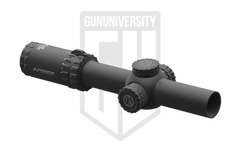 |
| See Price | |
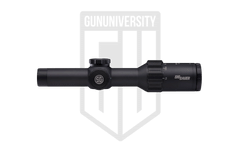 |
| See Price | |
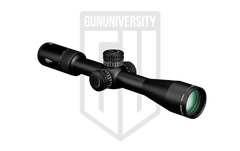 | FFP Optic | See Price | |
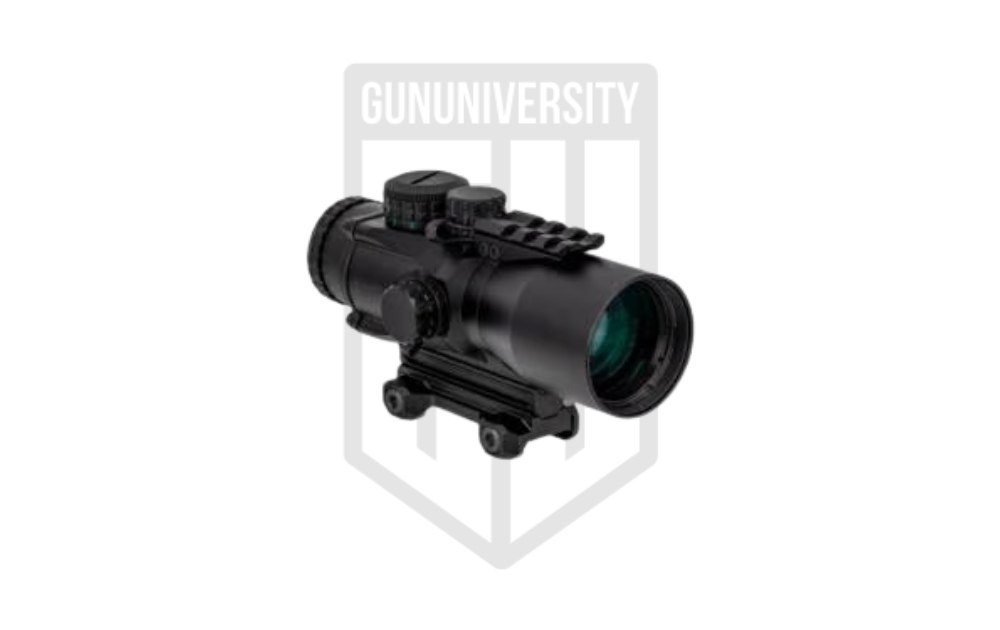 |
| See Price | |
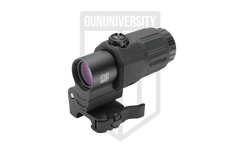 |
| See Price | |
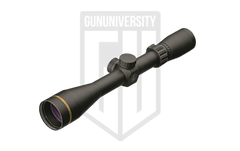 |
| See Price | |
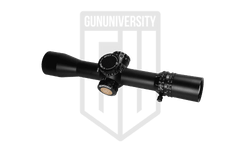 |
| See Price |
Best AR-10 Scopes Spec Comparison
| Scope | Length | Weight | Magnification | Objective Lens |
|---|---|---|---|---|
| Primary Arms SLx 1-8X FFP | 10.3 inches | 17.9 ounces | 1-8X | 24mm |
| SIG TANGO6T 1-6X | 10.5 inches | 22.1 ounces | 1-6X | 24mm |
| Vortex Viper Gen 2 3-15x44 | 14.3 inches | 28.1 ounces | 3-15X | 44mm |
| Primary Arms SLx 5X | 5.81 inches | 18.4 ounces | 5X | 36mm |
| Eotech XPS2 With G33 Magnifier | 3.8 inches | 9 ounces | 1X | NA |
| Leupold VX-Freedom 3-9X40mm | 12.49 inches | 12.2 ounces | 3-9X | 40mm |
| Nightforce Atacr 4-16X42 F1 | 12.6 inches | 30 ounces | 4-16X | 42mm |
The Best AR-10 Scopes
The best AR10 Scopes on the market are:
- Primary Arms SLx 1-8X FFP
- SIG TANGO6T 1-6X
- Vortex Viper Gen 2 3-15×44
- Primary Arms SLx 5X
- Eotech XPS2 with G33 Magnifier
- Leupold VX-Freedom 3-9X40mm
- Nightforce Atacr 4-16X42 F1
Best AR-10 Scopes Reviews
Now that I’ve listed the different scopes that can make best AR10 scope list, and given a bit of an overview of each, let’s dive into the individual analysis of each. I’ll break down the specs, review each scope and look at the pros and cons and basically defend why I choose one over another and whether or not there are others on the market that could arguably take its place.
Primary Arms SLx Specs
- Length 10.3 inches
- Weight 17.9 ounces
- Magnification 1-8X
- Objective Lens 24mm
Primary Arms SLX 1-8X FFP Review
When creating this list, I had to start with the Primary Arms SLX 1-8 FFP scope. I love this one so much that I also listed it as my #1 pick for best rifle scope costing $500 or less.
PA basically mixed tactical with practical, without breaking the bank with the Primary Arms SLx 1-8X FFP. As the FFP implies, it’s a first focal plane scope (see here for differences between FFP and SFP).
It’s not a bad combination of optic, price, and reticle. The ACSS-Raptor reticle is one of their best and utilizes a reticle designed for both close and long-range. At close range, the red illuminated reticle is small and works as quite a close range red dot at those lower magnification settings.
As you crank up the magnification, the Raptor reticle grows, and you can make use of the holdovers calibrated for the 308 caliber round most AR-10s fire. Beyond that, the optic is super handy and very lightweight. Not bad at all, and it’s perfect for hunting, 3-gun, and most moderate range shooting tasks.
Because of its construction, cost and magnification, plus its lightweight nature, this is an excellent all-round scope for the AR10.
Primary Arms SLx 1-8X FFP Pros and Cons
- Awesome Versatility
- Great Price
- IP67 Waterproof
- Clarity at longer range (800 yards+) suffers
Primary Arms SLx 1-8X FFP Deals
SIG TANGO6T 1-6X Specs
- Length 10.5 inches
- Weight 22.1 ounces
- Magnification 1-6X
- Objective Lens 24mm
SIG TANGO6T 1-6X Review
I didn’t so much as choose the SIG TANGO6T as much as the US Army did. The TANGO6T now sits on the 7.62 designated marksman’s rifle in the US Army inventory. I can see why the old TANGO6T provides a versatile magnification range, an awesome IP8 waterproof and dust ingress rating, and some awesome reticle options. If you are rocking a standard 308 AR-10, then the 7.62 Extended range reticle will be your best friend and is definitely something you should consider.
It provides drop points out to 1000 meters and makes scoring those hits fairly simple. If you are going with a different caliber, then the Hellfire MOA Milling reticle will work wonderfully for any caliber. The TANGO6T also provides a very generous 4.1-inch eye relief, and a generous eye box at 1X makes it quick to get behind.
When you combine that with the illuminated center of the reticle, you have what’s essentially a red dot at close range. At long ranges, the 6X magnification allows you to reach out and touch a target with the precision design reticle and FFP design.
However, one thing I have against this is that I thinks its a bit pricey for a 1-6x scope. Sure, it’s a better scope than the PA listed above. However, I don’t think it is a better ROI coming in at almost $1000 more expensive. That being said, if you find some sweet deal or they lower the prices dramatically, then I’d consider raising this to #1 in my list.
SIG TANGO6T 1-6X Pros and Cons
- Durable
- Great Reticles
- Generous Eye Relief
- Pricey for a 1-6X
SIG TANGO6T 1-6X Deals
Vortex Viper 3-15×44 Specs
- Length 14.3 inches
- Weight 28.1 ounces
- Magnification 3-15X
- Objective Lens 44mm
Vortex Viper PST Gen 2 Review
Let’s face it, Vortex is a great company. However, they usually don’t make my #1 on different scope lists. However, there are other writers on Gun University that would disagree on a couple of those. That’s not to say they don’t have a great scopes, its just that I tend to find that their scopes are decent and decently priced.
However, the Vortex Viper is pretty special. So much so, that it was really hard as to whether or not I should list this as #1 or #2.
If you are getting into the world of PRS or just want to stretch your legs with your AR-10, then the Vortex Viper PST Gen 2 3-15×44 is a great way to go. This first focal plane scope grants you several reticle options, and I’d use the MOA variant of the EBR-7C. This illuminated reticle gives you a tree-style design that allows quick windage and elevation calls at the range.
On top of the scope sits some awesome target turrets and a parallax adjustment turret. The adjustments are tactile and audible and entirely accurate with their quarter MOA adjustment graduations. Getting on target and making the most of your AR-10 doesn’t have to break the bank, and the Viper PST Gen 2 3-15X FFP can get that done.
The only real issue I have with this one though, is that I have issues with the brightness. The illumination has problems when shooting in bright lights.
So, because of the illumination, I couldn’t make this the #1 or 2. That being said, if shooting in bright lights isn’t a problem for you, then disregard and over this up your list. But for the time being, I’d prefer the Primary Arms.
Vortex Viper 3-15×44 Pros and Cons
- Awesome Reticle
- Super Clear
- Great Price Point
- Illumination falters in bright light
Vortex Viper 3-15×44 Deals
Primary Arms SLx 5X Specs
- Length 5.81 inches
- Weight 18.4 ounces
- Magnification 5x
- Objective Lens 36mm
Primary Arms SLx 5X Review
Okay, so, in the #1 spot,I listed the Primary Arms SLX 1-8. However, if you’re looking for an even cheaper option, then the cheapest on my list of the best AR10 scope has to go to the SLx 5x.
If you want the go the short and light route, a prism might be the way to go. A 5X prism is considered high powered in the prism world, and the Primary Arms SLx has the AR-10 in mind for its construction. First, it’s an AR-height optic, so getting behind the scope is easy and feels natural. Five power might not be the most magnification, but it works out to 600 yards on man-sized targets.
Hunters are well served with the SLx 5x, and it packs a number of features that make it desirable. Across the top is a short section of rail for mounting a red dot, so it’s just as effective up close as it is to moderate ranges. The ACSS-5.56/308 reticle takes you out to 800 meters with ease and provides a brightly illuminated sight that works well for both close and long-range shots.
My only issue with this one is that it has the same problem as the Vortex. It’s illumination has problems in bright lights. Granted this is a much cheaper option, but it didn’t beat the Vortex because I think the Vortex’s capability is not only better, but also proportional to the cost difference.
So, check this one out if you need a cheaper option than the Primary Arms SLX 1-8x.
Primary Arms SLx 5X Pros and Cons
- Short and Sweet
- Awesome reticle for 308 Rifles
- Mounts a second red dot.
- Illumination is just barely daylight bright
Primary Arms SLx 5X Deals
Eotech XPS2 Specs
- Length 3.8 inches
- Weight 9 ounces
- Magnification 1X
- Objective Lens NA
Eotech XPS2 With G33 Magnifier Review
For reflex sights, I’m a fan of the Eotech XPS2 holographic optics. These awesome optics are tough to beat in the durability department. Heck, you can break the lens, and it will function without issue. The -0 reticle provides a 1 MOA dot and a 68 MOA circle that’s super easy to use and very versatile. At close range, you can use the bottom of the circle for mechanical offset, and the 68 MOA circle can be used as a range finder.
It’s a compact, lightweight optic that’s perfect for carbine size AR-10 rifles. They are great for brush hunting, duty use, and similar close-range shooting tasks. Because you are tossing it on the long-range ready AR-10, I advise pairing it with Eotech G33 3x magnifier. This way, you can extend your range and capabilities. However, that does increase the cost.
I personally like the range on this, if you have the 3x magnifier, and also enjoy the fact that I can add nightvision to it as well – giving it a bit of a more adaptability for the purposes.
While this doesn’t get my #1 spot in this list of top AR-10 scopes, it does perhaps get my best AR-10 holographic scope award. SO, if you’re looking for a holographic, then this is the better option.
Eotech XPS2 Pros and Cons
- Super Small and Lightweight
- Versatile Reticle
- Super Tough
- 1X and 3X can’t take full advantage of the AR-10’s range
Eotech XPS2 With G33 Magnifier Deals
Leupold VX-Freedom Specs
- Length 12.49 inches
- Weight 12.2 ounces
- Magnification 3-9X
- Objective Lens 40mm
Leupold VX-Freedom 3-9X40mm Review
Freedom isn’t free….but the VX-Freedom is pretty dang cheap. The Leupold VX-Freedom gives AR-10 shooters an awesome and simplistic option that doesn’t break the bank. This isn’t a fancy scope, but the VX-Freedom grants you awesome optical clarity with a respectable magnification range. It’s perfect for hunting, and the duplex reticle means the SFP design doesn’t really matter.
For hunting, the VX-Freedom provides a rock-solid experience. It’s well made and very durable. Leupold backs it with an amazing warranty. It will certainly stand up to the abuse of your AR-10 and can take field conditions with a grin. Plus, the 4.2 inches of eye relief at the 3X magnification setting makes it quick and easy to get behind, and the 3.7-inch eye relief is still generous at 9X.
Like I said above, this one is not only extremely cheap, it is the cheapest on the list. There are other cheaper items out there, but their quality dramatically drops. That being said, this is just about the bare bones to a quality scope as you can get. Nothing fancy, but decent.
So, if you’re looking to go cheap, but have something solid, then the Leupold VX-Freedom is it.
Leupold VX-Freedom 3-9X40mm Pros and Cons
- Affordable
- Easy to Use
- Durable
- Limited Features
Leupold VX-Freedom Deals
Nightforce 4-16X Specs
- Length 12.6 inches
- Weight 30 ounces
- Magnification 4-16X
- Objective Lens 42mm
Nightforce ATACR 4-16X42 F1 Review
Oh, so before we leave, let’s step into the world of big boy optics. If you want to be a serious competitor in the PRS gas gun leagues or stretch your 6.5 Creedmoor legs, then Nightforce is your go-to. The Nightforce ATACR provides clear glass, brilliantly accurate adjustments, and extreme clarity throughout the entire magnification range. The ATACR series is beloved by SOCOM and serves on numerous sniper rifles in the special ops armory.
The 4-16X magnification range excels at AR-10 ranges and doesn’t make the gun overly cumbersome or heavy. It will also grant you a very versatile magnification range for close, moderate, and long-range shooting.
Plus, a Nightforce won’t ever tap out, regardless of what you expose it to, unless you expose it to a sledgehammer, I guess.
However, as I said above, this is not cheap. It’s the most expensive one on this list and by a good mile. So, I guess I’d award this one the most ‘premium’ ar 10 scope.
Nightforce ATACR 4-16X42 F1 Pros and Cons
- Extreme clarity
- Versatile Magnification Ranges
- Tons of Great Reticle Options
- Expensive with a capital E
Nightforce ATACR 4-16X42 Deals
Buyers Guide – Do You Need an Optic?
On an AR-10, I’d say you are underserved without a scope. It’s a powerful, very capable rifle that can reach out and touch a target beyond the average 300 yards. Without an optic, you aren’t getting the most out of your rifle. When you start choosing your optic, you need to consider what your task will be. Goal-based performance is critical in your decision-making when choosing an optic.
Hunting
Hunting doesn’t require some giant, powerful optic. Even with an AR-10, you won’t be making extremely long-range shots. Taking shots beyond a few hundred yards is unethical, and it’s difficult to make a quick kill shot at these ranges. Most shots will likely be taken within 100 yards. It’s still nice to have magnification so you can zoom into that heart and lung zone for a quick kill shot.
An LPVO in the 1-6X or higher or a variable in the 2.5-10X range will do a fantastic job at providing you with a versatile magnification range for all common hunting ranges. You want to prioritize low light performance and optic clarity as well. Seeing a brown deer in the fall where the foliage is also brown can be tough with a poor quality optic. I’ve had the most luck shooting as the sun rises and the sun sets, so I want excellent low-light performance.
The red dot can fall into place if you are brush hunting. Here the range is always close, and you likely want the rifle you’re toting to be lightweight and capable. The red dot or reflex sight will give you rapid, on-target capability.
Long Range Precision
If you are getting into the gasser division of the Precision Rifle Series, then the AR-10 is the obvious platform of choice. These contests are often rapidly moving, challenging competitions that demand precision and long-range performance. Getting into this sport requires some serious rifles skills, an awesome gun, and a high-performance optic.
Variable optics rule in this department. Specifically, higher-powered variable optics with large magnification ranges. Guns in the 3-15X or 4-16X are a great place to start. They allow plenty of close-range capabilities with long-range capability as well. As you’d imagine, extreme clarity is critical, and you might desire illumination, a first focal plane design, and a reticle that grants you elevation and windage calls.
Duty Use
When the AR-10 is pushed into a duty role, it often has the job of being a designated marksman’s rifle or a sniper rifle. In that role, we turn back to the LPVO and variable optic. First focal plane scopes are a must-have, and to take advantage of the AR-10’s power, you likely want an optic on the higher side depending on your task.
Once more, I advise high-quality optics. You want your duty optic to be tough but bright and clear with a highly useable reticle. Crosshairs can work, but the wide variety of multi-use reticles out there make them obsolescent.
Caliber and Performance
The AR-10 comes in several different calibers, especially when you get into the wildcats out there used by precision shooters. However, I want to focus on the two most popular AR-10 chamberings, the 7.62 NATO/308 Winchester and the 6.5 Creedmoor. The AR-10’s most popular chambering is the 308 Winchester, but Creedmoor is catching up. When you start to choose your optic, you have to consider your caliber and the performance it can eke out.
The 308 Winchester is an older round that has excellent performance out to 800 yards or so with ease. It’s supersonic to 975 yards, and that’s a nice solid range for the big 30 caliber round.
The younger, hotter 6.5 Creedmoor can reach out even further and remains supersonic past 1,200 yards! It’s one of the most efficient 1,000-yard cartridges on the market, and it’s been widely embraced by the PRS market for a good reason.
Clearly, the 6.5 Creedmoor rifles can benefit more from a higher-powered optic, but both calibers reach well beyond the typical 5.56 range most of us are used to.
The Basics of Awesome Optics
Clarity – When you Google rifle scopes, you’re probably pleasantly surprised that you can purchase a 6-24X optic for 100 bucks, but don’t get your hopes up. Anyone can make a powerful scope, but not everyone can make a scope that’s powerful and clear. Cheap scopes will suffer from poor optical clarity, especially with higher magnification ratings. Poor clarity means your view downrange will be clouded, colors will blend, and the optic is basically useless.
Good optical clarity requires good glass. A good clear optic will allow you to see downrange and easily identify a target. Colors will stand out, and the world should look like it’s in high definition. Also, powerful scopes are often larger scopes.
One critical factor to clarity is light, and the exit pupil affects how much light is transmitted. The exit pupil is the objective lens diameter divided by the magnification. A larger objective lens helps transmit more light and more light grants a brighter, clever sight picture as magnification increases.
Durability – Companies construct scopes from aluminum and glass. That combination doesn’t scream bulletproof by any means. With that in mind, some companies make optics more durable than others. When shopping for optics, look for specific numbers and ratings in regards to durability. Oh, it’s waterproof? Well, what is the IP rating? Is it shockproof? What’s the G rating? Just saying you’re proofed for this or that doesn’t mean much without established standards.
Eye Relief – Eye relief is the distance your eye can be from the scope while seeing a full view through the scope. You measure eye relief in inches, and it can be important for shooters with AR-10s. AR-10s have a little recoil and snap to them, so a little extra eye relief prevents to gun from bonking you in the face.
Eye relief also helps you get behind the optic and on target fast. A nice amount of eye relief will be more than three inches, but there is certainly some wiggle room, and I would ditch a scope with 2.8 inches of eye relief.
Focal Plane – When you start getting into moderate range shooting, PRS competition, and duty use, you have to consider the focal plane of your optic. This is especially true when it comes to higher-powered optics. There are two focal planes, we have first focal plane and second focal plane. I won’t dive deep into that, but let’s talk about the end effect of the focal planes.
The Big Ten
If you are moving from the AR-15 to the AR-10, you are in for a treat. The more powerful semi-auto platform delivers a literal and figurative blast. Taking an AR-10 out to 600 to 800 to 1000 yards and ringing steel is a great day out. To get out there and have that fun you certainly need a good gun, but you also need a rock-solid optic. Don’t go cheap on your optical choices, especially on a rifle like the AR-10.
Recent Posts
December 20, 2025
December 15, 2025
December 15, 2025
December 12, 2025


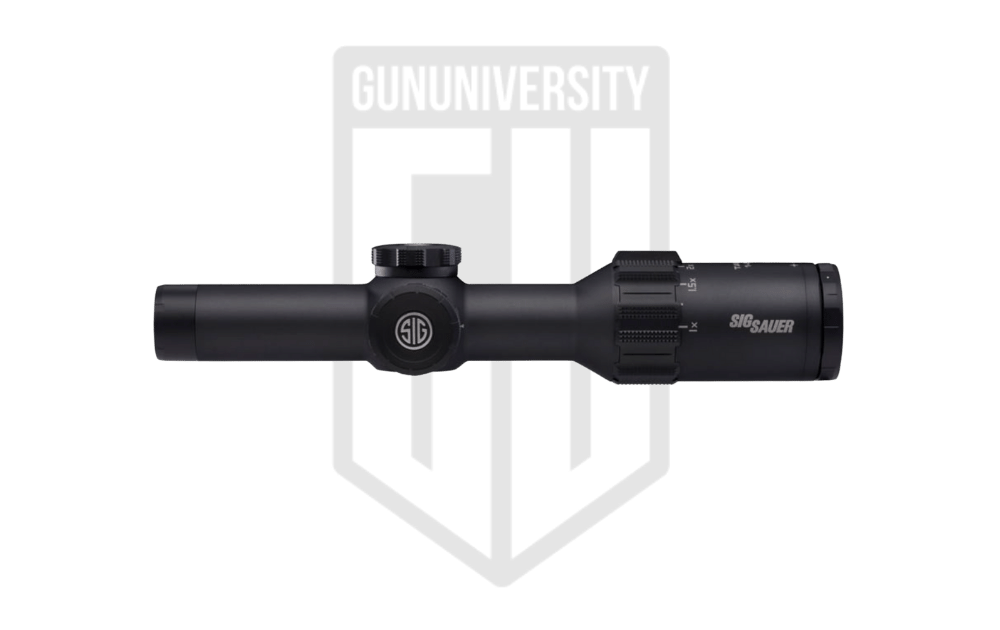


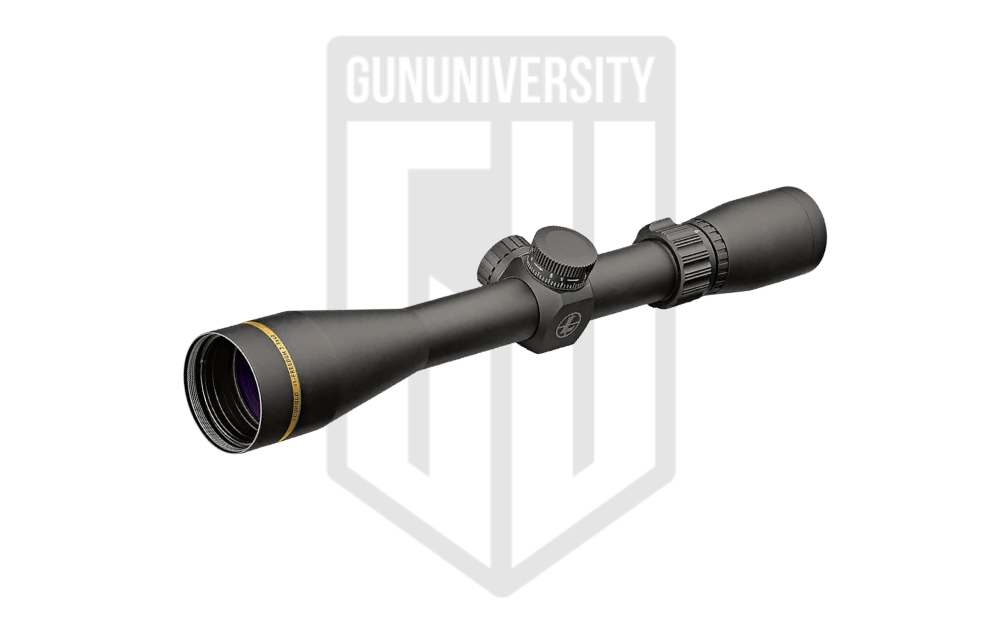




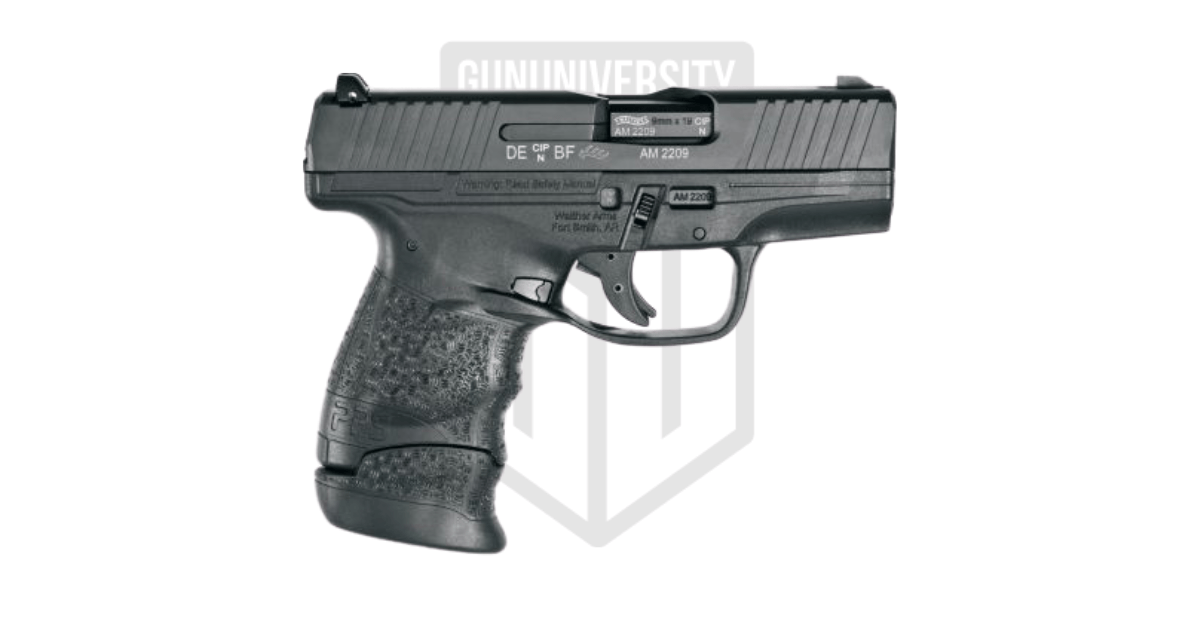
Can I use a10 point scope on a ar 15
Discover the best shooting suppliers, guns, barrels, lowers, scopes, triggers, ammo, and gear in the industry. We stay up to date on what is hot, what is great, and what fits every budget to bring you reviews and deep dives on all your favorite pieces of kit. You can decide what are the upgrades you want next and then go to our inhouse strategic partner Magcommander and purchase at some of the best prices on the internet.